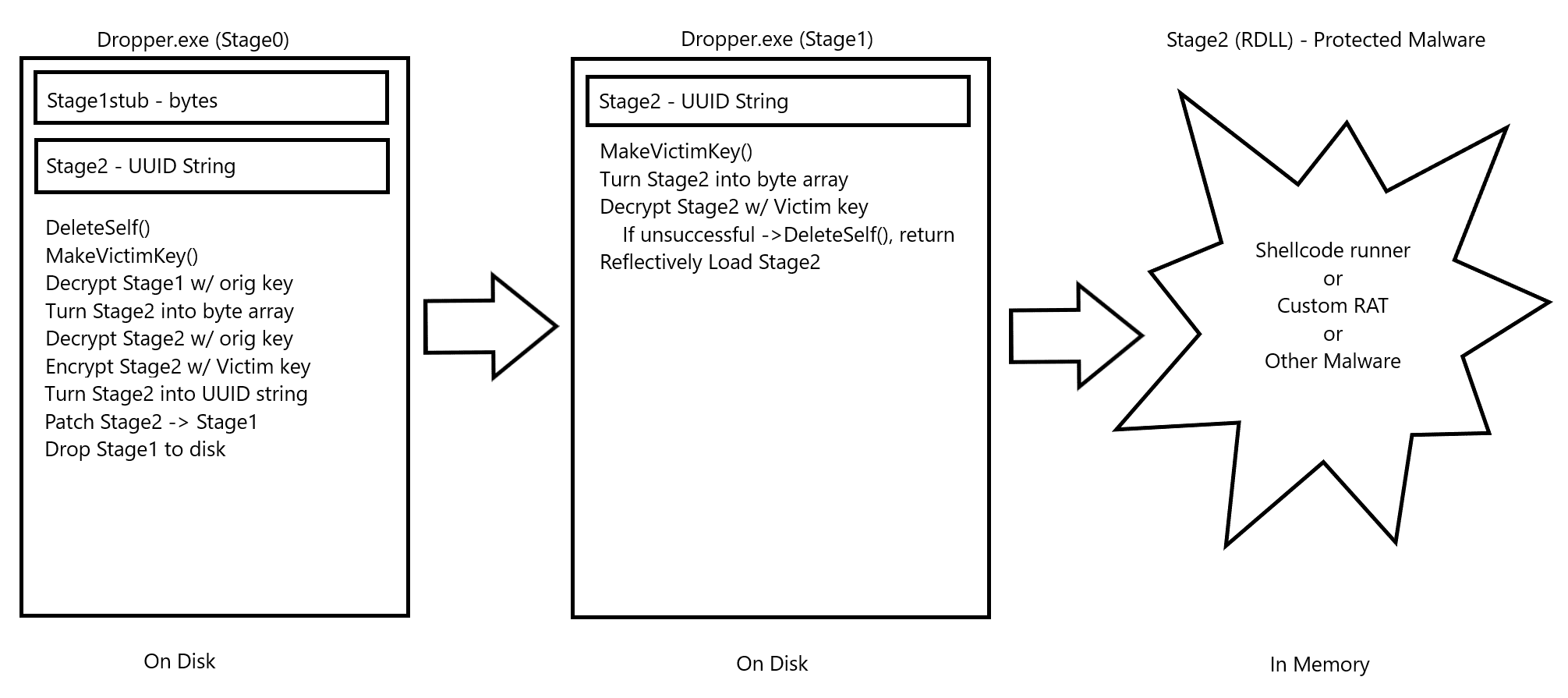
BeatRev Version 2
The first time the malware runs on a victim it AES encrypts the actual payload(an RDLL) using environmental data from that victim. Each subsequent time the malware is run it gathers that same environmental info, AES decrypts the payload stored as a byte array within the malware and runs it. If it fails to decrypt/the payload fails to run, the malware deletes itself. Protection against reverse engineers and malware analysts.

Technical Details
The Reflective DLL code from Stephen Fewer contains some Visual Studio compiler-specific instructions; I’m sure it is possible to port the technique over to MingW but I do not have the skills to do so. The main problem here is that the CobaltStrike shellcode (stageless is ~265K) needs to go inside the RDLL and be compiled. To get around this and integrate it nicely with the rest of the process I wrote my Stage2 RDLL to contain a global variable chunk of memory that is the size of the CS shellcode; this ~265K chunk of memory has a small placeholder in it that can be located in the compiled binary. The code in src/Stage2 has this added already.
Once compiled, this Stage2stub is transferred to kali where a binary patch may be performed to stick the real CS shellcode into the place in memory that it belongs. This produces the complete Stage2.
To avoid the I/O and CreateProcess fiasco previously described, the complete Stage2 must also be patched into the compiled Stage1 by Stage0; this is necessary in order to allow Stage2 to be encrypted once on-target in addition to preventing Stage2 from being stored separately on disk. The same concept previously described for Stage2 is conducted by Stage0 on target in order to assemble the final Stage1 payload. It should be noted that the memmem function is used in order to locate the placeholder within each stub; this function is not available on Windows, so a custom implementation was used. Thanks to Foxik384 for his code.
In order to perform a binary patch, we must allocate the required memory up front; this has a compounding effect, as Stage1 must now be big enough to also contain Stage2. With the added step of converting Stage2 to a UUID string, Stage2 balloons in size as does Stage1 in order to hold it. A stage2 RDLL with a compiled size of ~290K results in a Stage0 payload of ~1.38M, and a Stage1 payload of ~700K.
The builder application only supports creating x64 EXE’s. However, with a little more work in theory you could make Stage0 a DLL, as well as Stage1, and have the whole lifecycle exist as a DLL hijack instead of a standalone executable.
Install & Use
Copyright (c) 2022 Octoberfest7